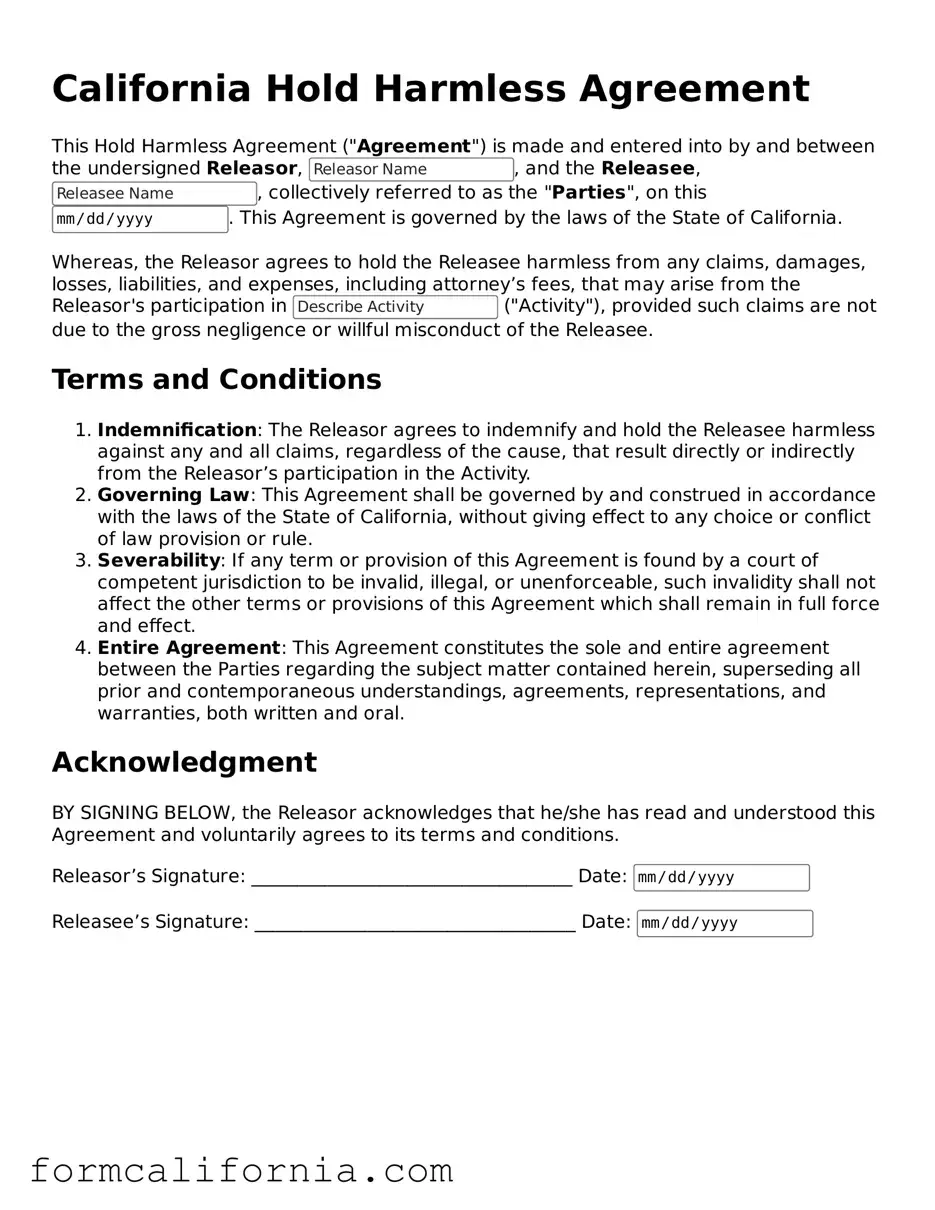The California Hold Harmless Agreement form shares similarities with the Indemnity Agreement. Both documents are designed to protect one party from legal and financial responsibilities that may arise from the actions of another party. In an indemnity agreement, the indemnifier agrees to shield the indemnitee from potential losses or damages, a principle that resonates closely with the essence of a hold harmless agreement.
Another related document is the Waiver of Liability. This legal form is used to relinquish one's right to pursue legal action against another party concerning specific activities, risks, or damages. Like the hold harmless agreement, signing a waiver of liability typically absolves the other party from responsibility for injuries or damages that may occur.
The Release of Liability is also akin to the hold harmless agreement. It functions to release one party from legal claims or liabilities brought by another party. While a hold harmless agreement often anticipates future claims and seeks to prevent them, a release of liability generally addresses existing disputes or potential disputes, absolving one party from further claims.
Similar in nature to the Hold Harmless Agreement is the Non-Disclosure Agreement (NDA). Although primarily focusing on confidentiality and the non-disclosure of proprietary information, an NDA can include clauses that hold one party harmless against breaches of the agreement. This crossover mainly lies in the protective measures each document establishes against potential losses or damages.
The Insurance Agreement often intersects with the principles covered in hold harmless agreements. An insurance agreement offers financial protection or reimbursement against losses from an insurance company to the insured. In contrast, hold harmless agreements seek to transfer the risk of potential legal claims or losses from one party to another without involving insurance.
A Similarity can be found with the Service Level Agreement (SLA). While an SLA typically outlines the services provided by one party to another, including standards, timelines, and responsibilities, it can incorporate hold harmless clauses. These clauses protect service providers from liabilities and claims that may arise in the execution of their duties, mirroring the liability shift in a hold harmless agreement.
The Loan Agreement shares a conceptual affinity with hold harmless agreements in its mechanism for protecting lenders. A loan agreement details the terms, conditions, and covenants between a borrower and a lender, including provisions that may shield the lender from defaults or legal actions. This protective stance is akin to the liability protections structured within a hold harmless agreement.
Last but not least, the Employment Contract, while primarily governing the terms of employment between an employer and an employee, can include clauses similar to those found in hold harmless agreements. These clauses may protect employers from legal actions stemming from an employee's actions within the scope of their employment, thereby reducing potential liabilities in a manner reminiscent of hold harmless agreements.
